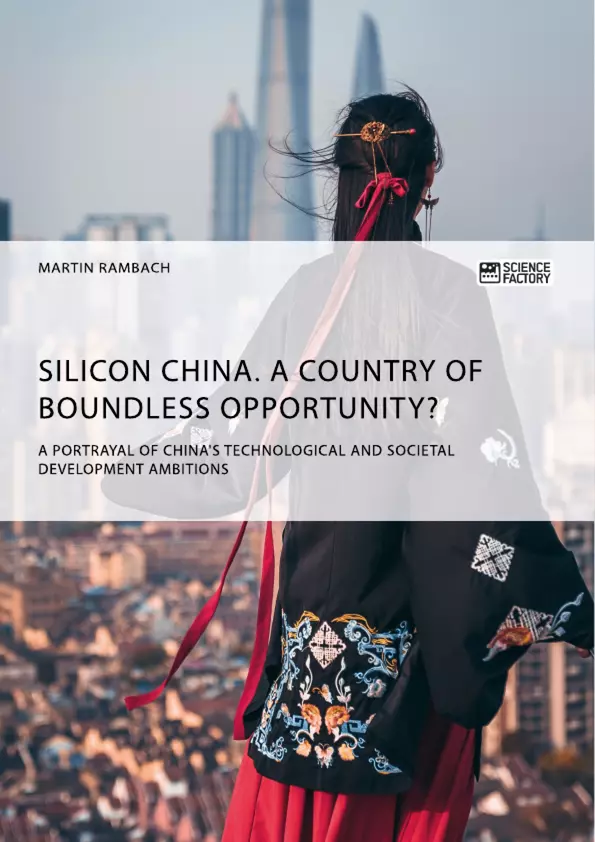The People's Republic of China has realized that it is time for a rejuvenation of its great nation. The goal is no longer just to be the workbench of the world, but also to catch up to other industrialized countries in terms of quality and efficiency. The country intends to be the world-leading high-tech manufacturer.
For this reason, the strategy paper "Made in China 2025" was introduced in 2015. The efforts to achieve those ambitions are analyzed in this publication.
Martin Rambach focuses on the Chinese high-tech industries of Artificial Intelligence, Mobility, E-commerce, financial technology and its involved major players and considers the international perspective of the Chinese development ambitions.
Keywords:
- China;
- Artificial Intelligence;
- High Technology;
- Made in China 2025;
- E-Commerce
Inhaltsverzeichnis (Table of Contents)
- ACKNOWLEDGEMENTS
- ABSTRACT
- LIST OF ABBREVIATIONS
- LIST OF FIGURES
- LIST OF TABLES
- 1 PREFACE
- 2 Made in China 2025
- 2.1 Background
- 2.2 Main content
- 2.3 Threats and Limitations
- 3 HIGH TECHNOLOGY FROM THE MIDDLE KINGDOM
- 3.1 Future of mobility
- 3.2 E-commerce and Financial technology
- 3.3 Artificial Intelligence
- 4 CHINA AND THE WESTERN WORLD
- 4.1 Chinese influence on Europe
- 4.2 China, the United States and the new tech world order
- 5 THE SOCIETAL PERSPECTIVE
- 5.1 Internet in China
- 5.2 The Social Credit System
- 6 METHODOLOGY
- 7 INTERPRETATION OF RESULTS
Zielsetzung und Themenschwerpunkte (Objectives and Key Themes)
This book examines China's ambitious technological and societal development plans, specifically focusing on the “Made in China 2025” initiative. It aims to provide insights into the driving forces behind China's technological advancement and its impact on both domestic and international landscapes.
- China's technological ambitions and the “Made in China 2025” strategy
- The development and deployment of high technologies in China, including mobility, e-commerce, financial technology, and artificial intelligence.
- The evolving relationship between China and the West in the context of technological advancements
- The societal implications of China's technological progress, including the internet and the Social Credit System
- The challenges and limitations associated with China's development plans
Zusammenfassung der Kapitel (Chapter Summaries)
The book begins with an overview of the "Made in China 2025" initiative, outlining its background, objectives, and key areas of focus. It then delves into specific technological advancements in China, exploring the future of mobility, the rise of e-commerce and financial technology, and the development of artificial intelligence. The text further analyzes the complex relationship between China and the West, particularly in the context of technological competition and influence. Finally, the book explores the societal implications of China's technological advancements, highlighting the impact of the internet and the Social Credit System on Chinese society.
Schlüsselwörter (Keywords)
This work focuses on key terms and concepts related to China's technological development, including "Made in China 2025", high technology, artificial intelligence, e-commerce, financial technology, mobility, internet, social credit system, Chinese influence, and the evolving global tech landscape.
- Quote paper
- Martin Rambach (Author), 2018, Silicon China. A country of boundless opportunity?, Munich, GRIN Verlag, https://www.grin.com/document/443107



